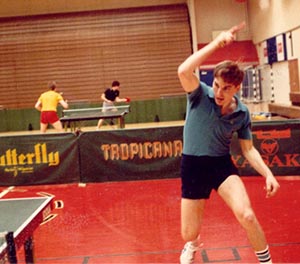Genetics and Table Tennis
The question sometimes comes up whether some people have a genetic advantage in table tennis. A troll raised this question in the mytabletennis.com forum, and while he was likely just trolling (you should see his postings in other threads!), it is an interesting question. (The thread has since been closed.)
The troll argued that the Chinese have a genetic advantage that gives them faster reflexes, and that's why the Chinese dominate. It's nonsense. One could just as easily claim the Swedes have a genetic advantage since their country of nine million people dominated or played even with the Chinese (over one billion people) for many years. But anyone with a knowledge of the game understands the reality.
The Chinese are the best in the world right now because they have more players, more top coaches, and train harder than any other country in the world. It is a national sport there, and taken more seriously there than anywhere else in the world. Most European players train six days a week, with much of summer off. The Chinese often train seven days a week, and train all summer.


 Photo by Donna Sakai
Photo by Donna Sakai


